Introduction
Recognizing autism in girls and women can be a complex task, often leading to underdiagnosis or misdiagnosis. The ability to mask autistic traits and conform to social norms can result in their autistic behaviors being overlooked or misunderstood. This article explores the unique challenges faced by autistic girls, including the complexities of diagnosing ASD, the impact of gender bias, and the importance of tailored support.
It also delves into the social and communication difficulties experienced by autistic girls, the mental health concerns they often face, and the educational challenges they navigate. Additionally, the article highlights the perspectives and experiences of parents raising autistic daughters and emphasizes the need for tailored interventions and training. Through real-life examples and outcomes, the article underscores the importance of understanding and supporting autistic girls to ensure their well-being and inclusion in every aspect of life.
Unique Challenges Faced by Autistic Girls
Recognizing autism in adult women presents unique challenges due to the complex nature of the condition and social expectations. The ability to mask autistic traits, such as maintaining eye contact and engaging in social interactions, can lead to underdiagnosis or misdiagnosis in women. This phenomenon, known as camouflaging, is more common in females and reflects the effort to align with social norms, often resulting in their autistic behaviors being overlooked or misinterpreted as typical.
Autism spectrum disorder (ASD) manifests differently in everyone, with no two individuals experiencing it in the same way. In women, repetitive behaviors and emotional regulation may differ from their male counterparts, and self-harming behaviors can take on unique forms, including eating disorders. These subtleties contribute to the complexity of diagnosing ASD in women and underscore the need for a more nuanced approach.
Recent statistics highlight the urgency of the situation. There has been a significant rise in autism referrals, with over 143,000 people waiting for an assessment as of July 2023, a 34% increase since October of the previous year. Despite this surge in demand, 93% of children did not receive an appointment within 13 weeks of being referred, and the number of children awaiting appointments has increased substantially since the pandemic.
Experts like clinical neuropsychologist Susan Epstein, PhD, acknowledge the limitations of current diagnostic criteria, which have historically been centered on characteristics more commonly observed in males. Additionally, intersectional considerations, such as the overlapping social categories of gender, race, class, and disability, are essential for a comprehensive understanding of how autism affects girls and women.
The Child of the North report underscores the impact of delayed support on educational outcomes, indicating that children with a diagnosis of autism are less likely to be excluded from school. It also criticizes the requirement for a medical diagnosis before support can be provided, which exacerbates the challenges faced by those on long waiting lists. Anne Longfield, Executive Chair of the Center for Young Lives, emphasizes the detrimental effects of the current assessment crisis on both mental health and educational opportunities for autistic children.
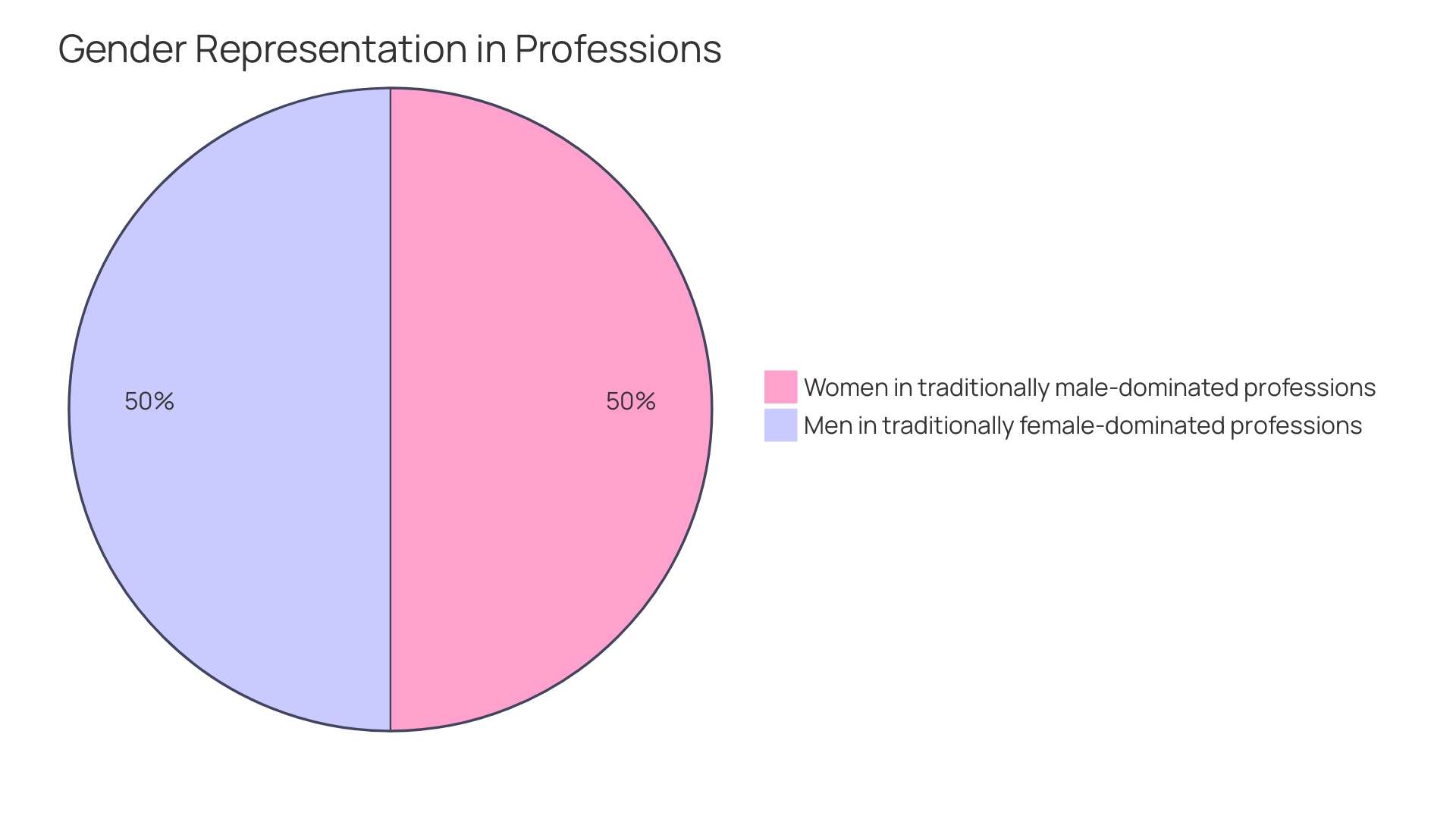
Diagnostic Barriers and Gender Bias
The journey to an autism diagnosis can be vastly different for women, often leading to underdiagnosis or misdiagnosis. Stereotypes and gender biases have historically skewed the understanding of autism towards male-specific characteristics, leaving many girls and women without the proper support and recognition of their neurodiversity. Research indicates a staggering 80% of autistic females are undiagnosed or misdiagnosed by the age of 18, which can result in mental health challenges and the exhaustion that comes from constant masking to fit a neurotypical mold.
Heather Florio's story is a powerful testament to the transformative impact of a timely diagnosis. Diagnosed with autism at 41, she describes how understanding her neurodiversity allowed her to embrace her unique perspective. This highlights the importance of breaking down diagnostic barriers for adult women who may have struggled with self-acceptance due to undiagnosed autism.
Camouflaging, a strategy where individuals mask or compensate for their autistic traits, often plays a significant role in the social experiences of autistic girls. It encompasses behaviors such as rehearsing social interactions or emulating peers, which can be particularly taxing due to autism's cognitive differences. These efforts to blend in can go unnoticed, further complicating the diagnosis process.
Biological and social factors contribute to the gender gap in autism diagnosis. While boys may be more biologically predisposed to certain disabilities, societal expectations and biases often influence the referral process for assessments, leading to a disproportionate identification of boys over girls. For instance, girls accounted for only 44% of those identified with visual impairments from 2015 to 2022, highlighting a broader pattern of underrepresentation in disability diagnoses.
The reality is that autistic girls face unique challenges that require recognition and understanding. The disparity in diagnosis can have long-term consequences, underscoring the urgency for a shift in the diagnostic paradigm that truly reflects the diversity of autism across genders.
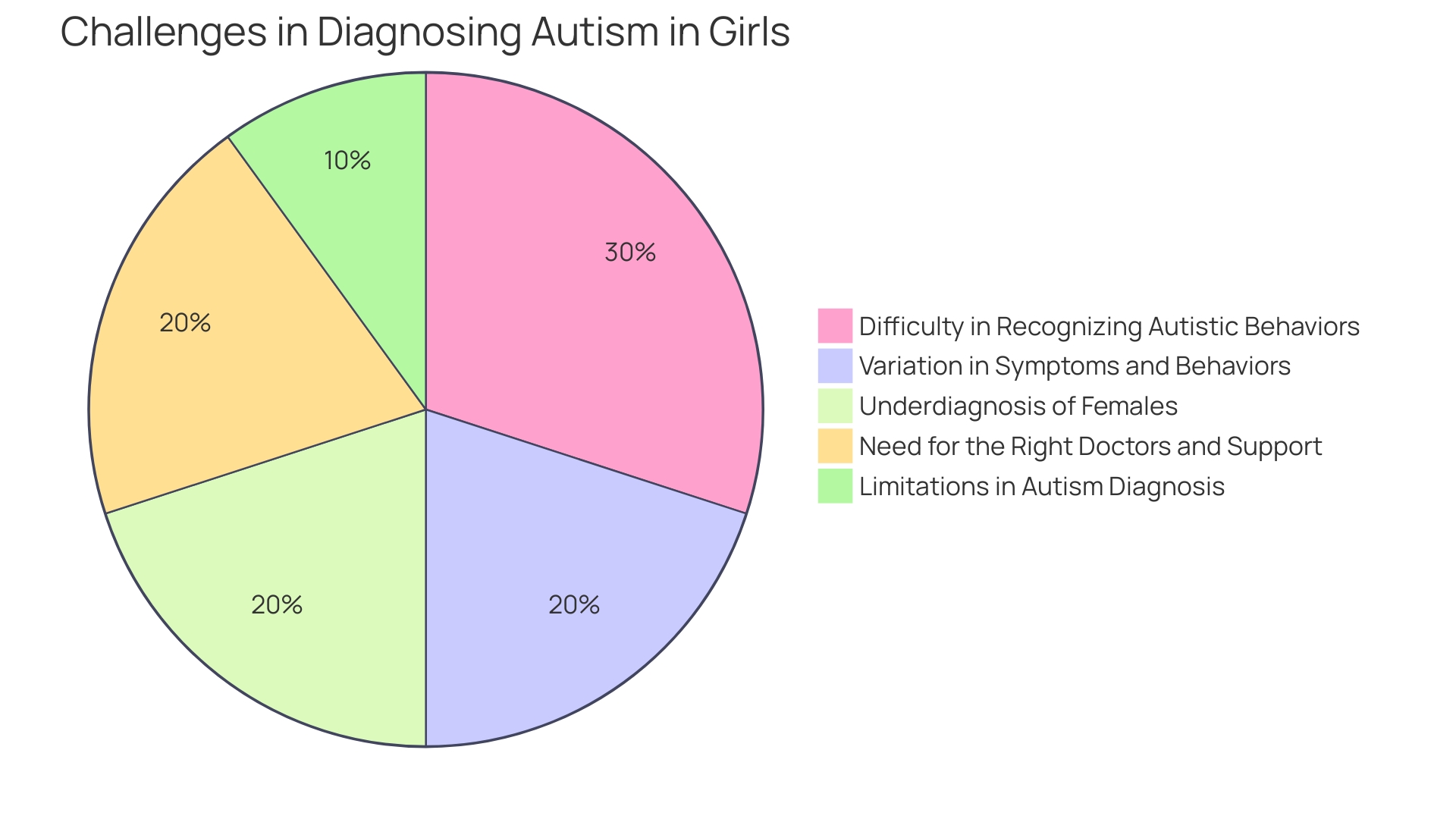
Symptom Presentation and Masking Behaviors
Recognizing autism in girls and women can often be a complex task due to their ability to camouflage or mask autistic traits. This skillful masking can lead to underdiagnosis or misdiagnosis, as the signs of autism may not be as readily apparent as they are in boys. In recent years, there has been a surge in the understanding that autistic females frequently engage in camouflaging behaviors, using a variety of strategies to blend in during social situations.
For example, they might rehearse conversation starters or emulate the body language of their peers to facilitate smoother interactions.
Autistic girls may also exhibit a pronounced self-consciousness, a heightened awareness of how they are perceived by others. This may drive their camouflaging efforts as they work to make a favorable impression. Such behaviors, however, are not without consequences, as they can contribute to the significant mental and physical health disparities observed in autistic individuals.
The conversation patterns of autistic girls often differ from those of boys, leaning more towards social topics and mimicking neurotypical behaviors. This can make it difficult for observers to recognize the challenges they face. With only 21.7% of autistic adults in paid employment in the UK, the need for better understanding and support is evident.
Stigma and misperceptions about autism can create barriers to employment and exacerbate the challenges autistic women encounter.
To truly advocate for and support autistic girls, it is critical to acknowledge and address the unique pressures they face, particularly in environments that lack understanding of neurodiversity, such as the workplace. By recognizing the signs of autism in girls, which may be subtly masked, and understanding the social context in which they operate, professionals can offer more effective support and help bridge the gap in diagnosis and treatment.
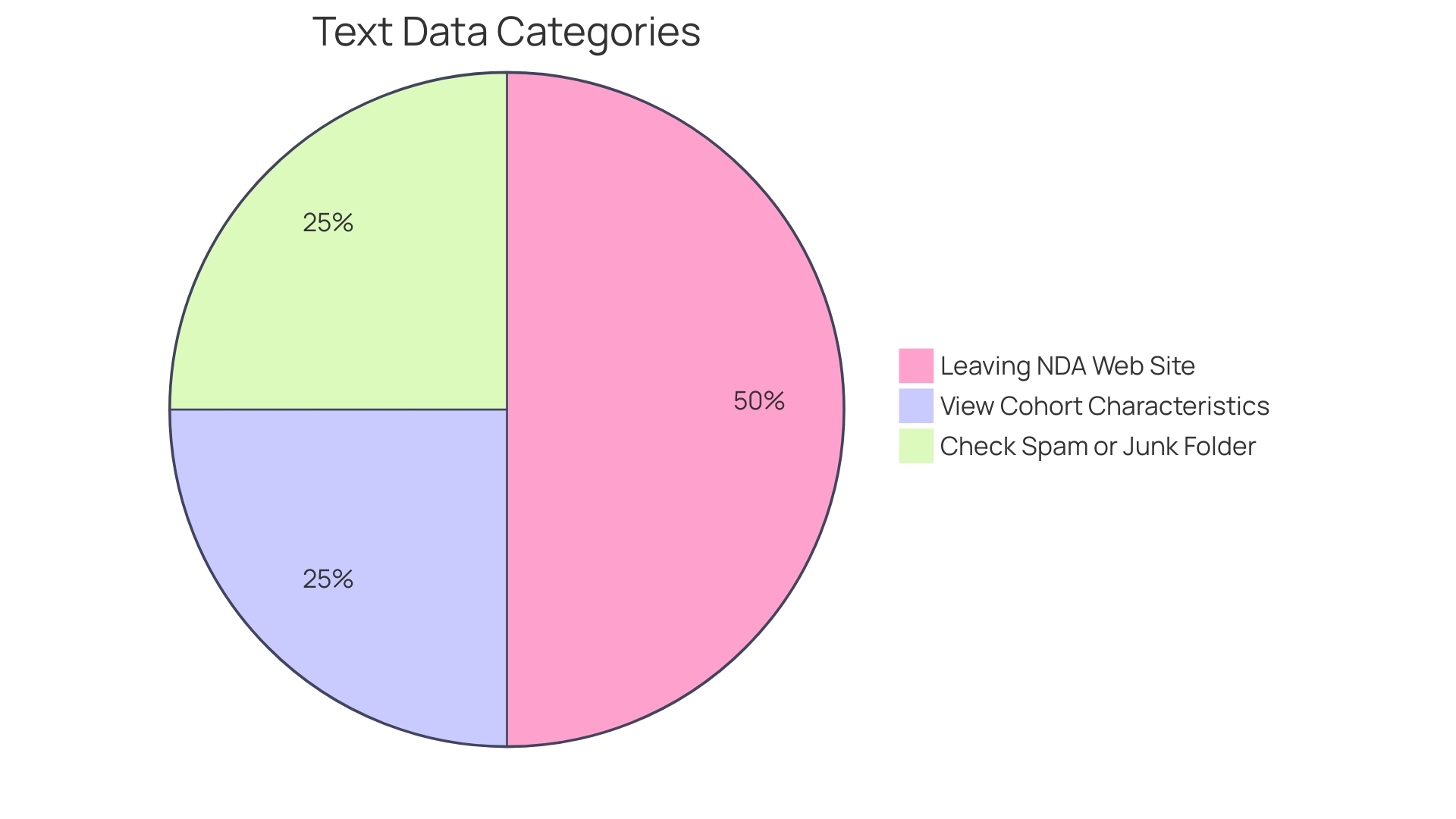
Social and Communication Difficulties
Autistic girls often experience distinct social and communication challenges, impacting their ability to form and sustain friendships, comprehend social nuances, and convey their thoughts and emotions. These challenges can manifest in multiple ways, including the misinterpretation of social cues and emotional expressions, which may lead to feelings of isolation and misunderstanding.
Studies reveal that autistic individuals can face a heightened risk of concurrent physical and mental health issues, leading to a reduced life expectancy. This is underscored by research that points to a range of health disparities, from neurological conditions to mental health concerns. For example, autistic girls may engage in camouflaging, a strategy to mask autistic traits and blend in with social norms, which becomes more common as they age.
This adaptive behavior, however, can lead to diagnostic overshadowing, where the true challenges of autism are missed due to their presentation alongside other diagnoses.
The complexity of social interactions for autistic girls is further compounded by intersectionality, which considers the layered experiences of gender, race, class, and disability. This approach underscores the need for personalized support strategies that acknowledge the unique contexts of each individual.
Addressing these social and communication difficulties is critical, as evidenced by studies that link poor social communication with increased depression in autistic adolescents. Effective support must include tailored social skills training, acknowledging the nuanced and individual needs of autistic girls, to foster their social well-being and enhance their quality of life.
Mental Health Concerns and Coping Strategies
Autism in girls often flies under the radar, leading to a critical need for better understanding and support tailored to their unique experiences. Alarmingly, a staggering 8 out of 10 autistic individuals grapple with mental health challenges, which can manifest in various forms such as anxiety, depression, and eating disorders. For autistic girls, these mental health concerns are compounded by societal pressures and a lack of recognition of their struggles.
A neurodivergent perspective underscores the importance of appreciating the diverse array of strengths and needs that characterize autism, which can evolve over time. Autistic identity, encompassing both personal and social dimensions, plays a vital role in shaping life choices and community engagement. It's pivotal that research and support structures move beyond a narrow medical view, to embrace and prioritize the lived experiences and insights of the autistic community.
Experts argue for a shift in focus, advocating for the acknowledgment of co-occurring conditions that often accompany autism. Anxiety disorders, in particular, are noted as one of the most prevalent and debilitating challenges faced by autistic individuals. This complex reality underscores the urgency for early intervention and the provision of robust mental health support.
The narrative surrounding autistic girls must change; they possess remarkable abilities to mimic social behaviors, often leading to an underestimation of their difficulties. Their conversational style, typically more social and focused on people and relationships, can mask the true depth of their challenges. It's essential to recognize and address the nuanced ways in which autism presents in girls, ensuring they receive the support they deserve to thrive in all aspects of life.
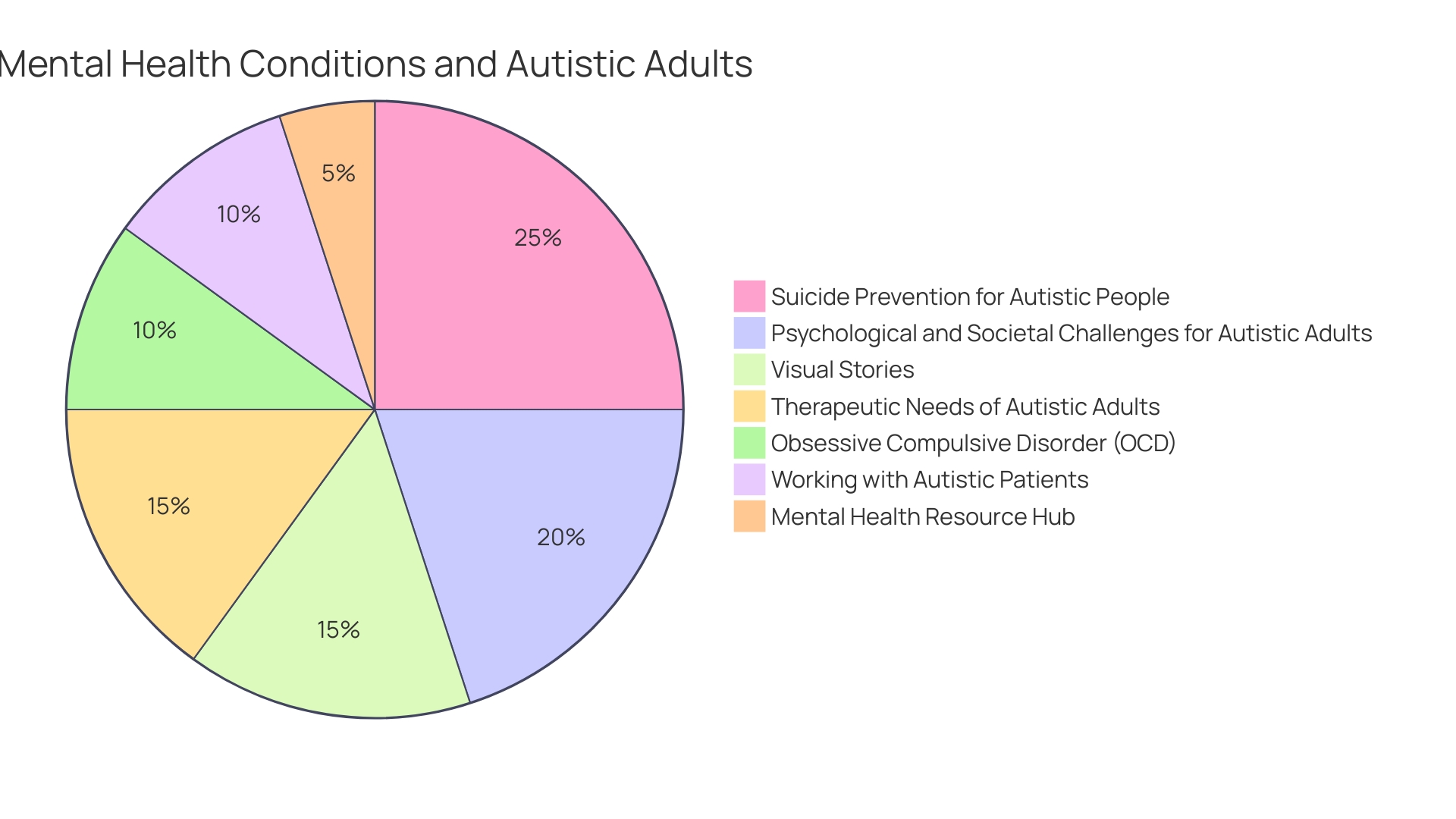
Educational Challenges and Support Needs
Autistic girls navigate a unique educational landscape, one that requires an understanding of their specific needs and challenges. Sensory sensitivity, for example, can create a barrier to learning, as the bustling sounds and sights of a classroom lead to sensory overload. Executive functioning difficulties also pose a hurdle, making tasks such as organizing work and managing time more daunting.
Tailored support, including individualized education plans, is vital for their academic success.
For some, like Lil, transitioning from special education to further opportunities such as post-16 education or community-based programs proves to be a significant step. These programs may offer not just academic learning but also practical skills and networking opportunities, which are essential for fostering independence and self-confidence.
Despite past beliefs that autistic individuals might not pursue higher education, current data reveals that approximately 0.75% of the UK higher education population has social or communication difficulties, a category that includes autism. This growing representation acknowledges that autistic traits like attention to detail and strong memory can be assets in academic settings. However, these students face distinct challenges, such as adapting to new routines and environments.
Support systems are evolving, as seen with initiatives like Emirates and Dubai International Airport's efforts to improve travel experiences for neurodivergent individuals, offering rehearsal flights to familiarize them with the process. This type of support extends beyond the classroom, demonstrating a growing awareness and responsiveness to neurodivergence.
The neurodiversity movement has gained momentum, recognizing the need for tools and strategies to support neurodivergent individuals, as emphasized by Dr. Samantha Hiew, founder of ADHD Girls in the UK. This movement acknowledges the intersectionality of social factors like gender and disability, promoting an inclusive approach to support.
It is crucial to understand that while autistic girls may mimic neurotypical social behavior effectively, this should not mask the challenges they face. Recognizing the signs of autism in girls remains a complex issue, with many going undiagnosed due to the ability to camouflage their traits. The ongoing refinement of diagnosis criteria and the understanding of autism's diverse presentation are key to ensuring that autistic girls receive the support they need to thrive in every stage of their education and beyond.
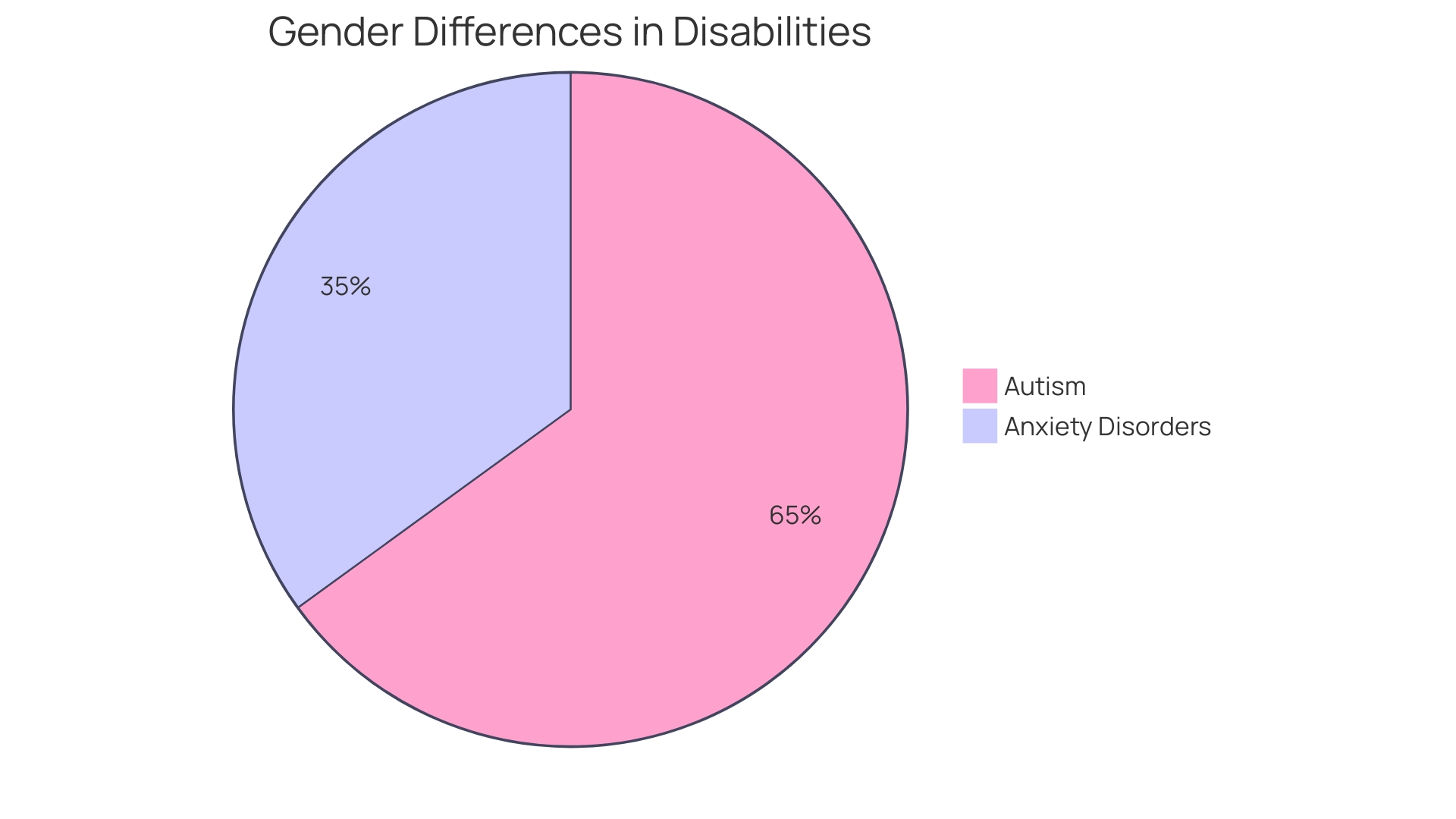
Parental Perspectives and Experiences
Navigating the journey of raising an autistic daughter comes with unique challenges and opportunities for parents. Dr. David (Dan) R. Offord's words resonate deeply as he emphasized the importance of a fair 'race' for children with disabilities, including autism, in all aspects of life. As parents strive to provide engaged, peaceful, and well-supported participation for their autistic daughters in school, home, and leisure activities, they contribute significantly to their mental health and equity in society.
The stories of parents who juggle the unmet needs and the valued assets their autistic daughters bring to the community are powerful. They work tirelessly to reduce stressors that may arise from transitions, like moving from a special school to a post-16 destination, as was the case for 17-year-old Lil and her transition to a community-based cafe in Southampton, UK. This transition highlights the need for careful planning and support to navigate the uncertainties and unfamiliarities that come with new environments and routines.
Autistic individuals themselves, including parents, have unique experiences that healthcare professionals must understand and accommodate. A study exploring the breastfeeding experiences of 152 autistic parents in the UK discovered that 87% of those who breastfed had a strong motivation to continue despite challenges, with a notably lower rate of formula use compared to the national average. This insight underscores the need for communication strategies that resonate with autistic parents' sensory experiences and preferences.
Moreover, a survey involving 41 autistic adults, 50 parents of autistic children, and 31 supporters from New Zealand and Australia emphasized the importance of 'neurodiversity affirming' support goals. These goals focus on leveraging the child's strengths and interests without attempting to change them, and on altering the adults and environments around the child instead. Such an approach promotes well-being without forcing children into uncomfortable situations.
Sadly, many parents of autistic children, including those who are autistic themselves, face difficulties in securing appropriate support. A study involving ten autistic mothers highlighted systemic issues, rather than individual failings, as the primary challenge in obtaining necessary services for their children. This shared struggle with non-autistic parents reveals a broader issue within the support system that requires attention.
As we consider these varied experiences, it's clear that the 'race' for autistic girls and their families is far from fair. But with dedicated support, resources, and understanding, we can work towards creating a society that truly accommodates the needs and celebrates the contributions of autistic individuals and their families.
Importance of Tailored Interventions and Training
Understanding the unique manifestations of autism in girls is essential for creating effective support systems. Research underscores a staggering reality: by the age of 18, 80% of autistic females are either undiagnosed or misdiagnosed. The consequences of this oversight are significant, manifesting in higher rates of mental health challenges among autistic women compared to men.
To combat this, specialized training for professionals is not just beneficial but necessary. These programs must be rich in insights about the distinct needs and strengths of autistic girls, equipping caregivers with the ability to foster environments that support their well-being.
Successful interventions have been demonstrated through initiatives like the community-based café in Southampton, UK, which couples a welcoming social setting with practical skill-building opportunities. Similarly, initiatives by Emirates and Dubai International Airport, providing rehearsal flying experiences for neurodivergent children, exhibit the positive impact of tailored experiences. Autistic girls often employ camouflaging behaviors to blend in, which can mask their autistic traits and hinder proper diagnosis.
This makes public awareness and professional education pivotal.
Statistics reveal that only around 3 in 10 working-age autistic individuals are employed, highlighting a gap that specialized training could help close. By fostering an understanding of how repetitive behaviors and emotional regulation may present differently in females, professionals can better support autistic girls. As we strive to 'make the race fair,' echoing the sentiment of Dr. David (Dan) R. Offord, we must ensure that our interventions and strategies are informed, inclusive, and empowering for autistic girls, allowing them to engage fully and equitably in all aspects of life.
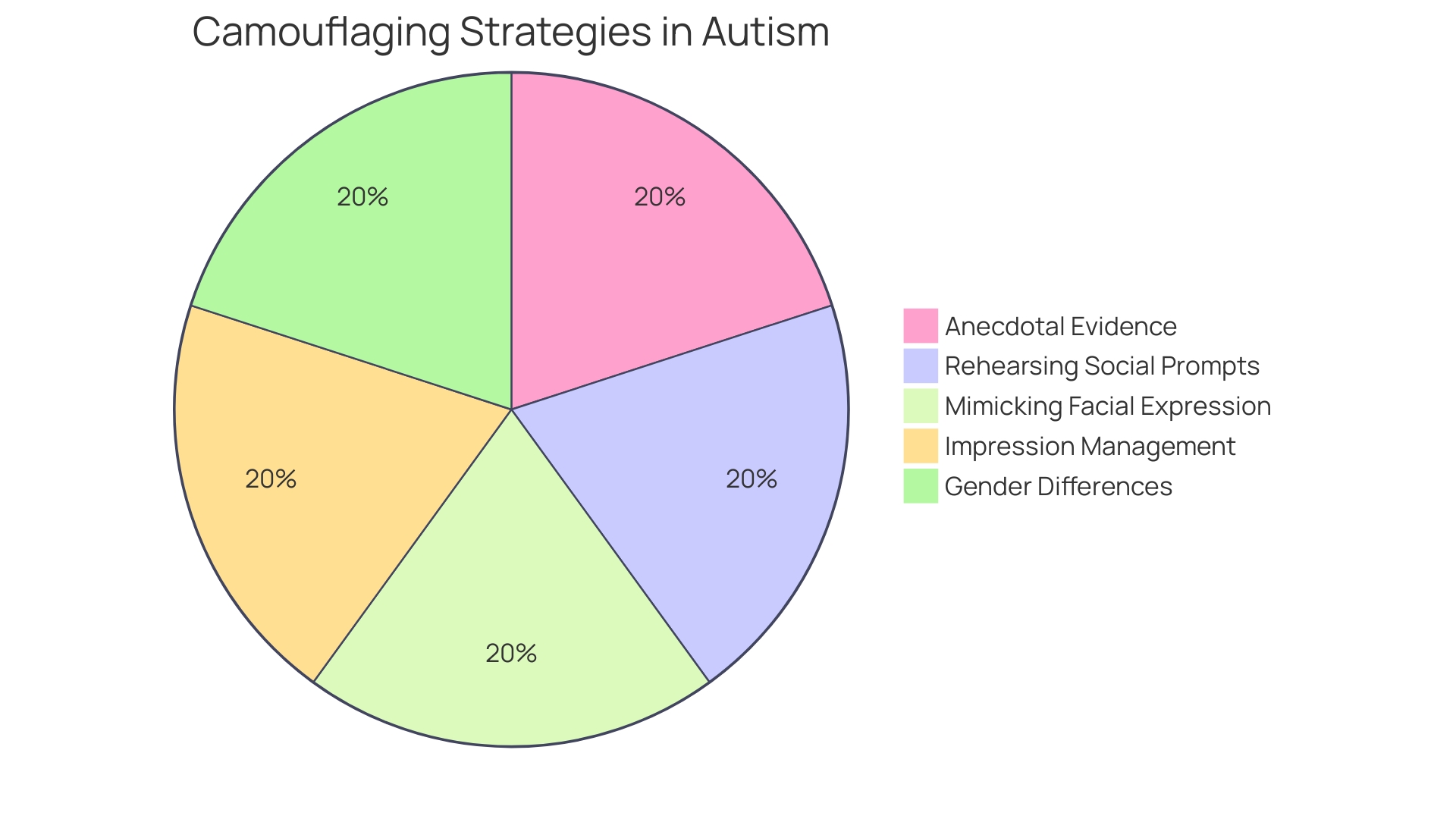
Case Study: Real-Life Examples and Outcomes
The journey of autistic girls often entails navigating a unique set of challenges that can significantly impact their development and quality of life. Take, for instance, the harrowing experience of a girl who, after routine vaccinations, suffered multiple seizures, highlighting the acute medical crises autistic individuals can face. On the other end of the spectrum, the story of an 11-year-old girl with anxiety and higher support needs illustrates the transformative power of occupational therapy.
Not only does it foster independence, but it also equips these young individuals with the skills necessary to thrive in their daily lives.
Moreover, organizations like The Autism Community in Action and NeuroQure are making strides in supporting families from the earliest stages, acknowledging the profound difference early intervention can make. The involvement of parents, as noted by Dr. Jac den Houting, can shape the trajectory of an autistic child's life by affirming and supporting their identity.
Statistics also underscore the urgency for action: only 3 in 10 working-age autistic individuals are employed, revealing a stark contrast to the employment rates of non-disabled people. This gap calls for a concerted effort to improve autism awareness and employment support.
Ultimately, understanding the lived experiences of autistic girls and women, and recognizing the diversity of their needs, are critical steps towards creating a more inclusive and supportive society. It's about ensuring fairness in the 'race' of life, as Dr. David (Dan) R. Offord aptly put it, and ensuring all children, including those with autism, can participate fully in the domains of school, home, and leisure activities.
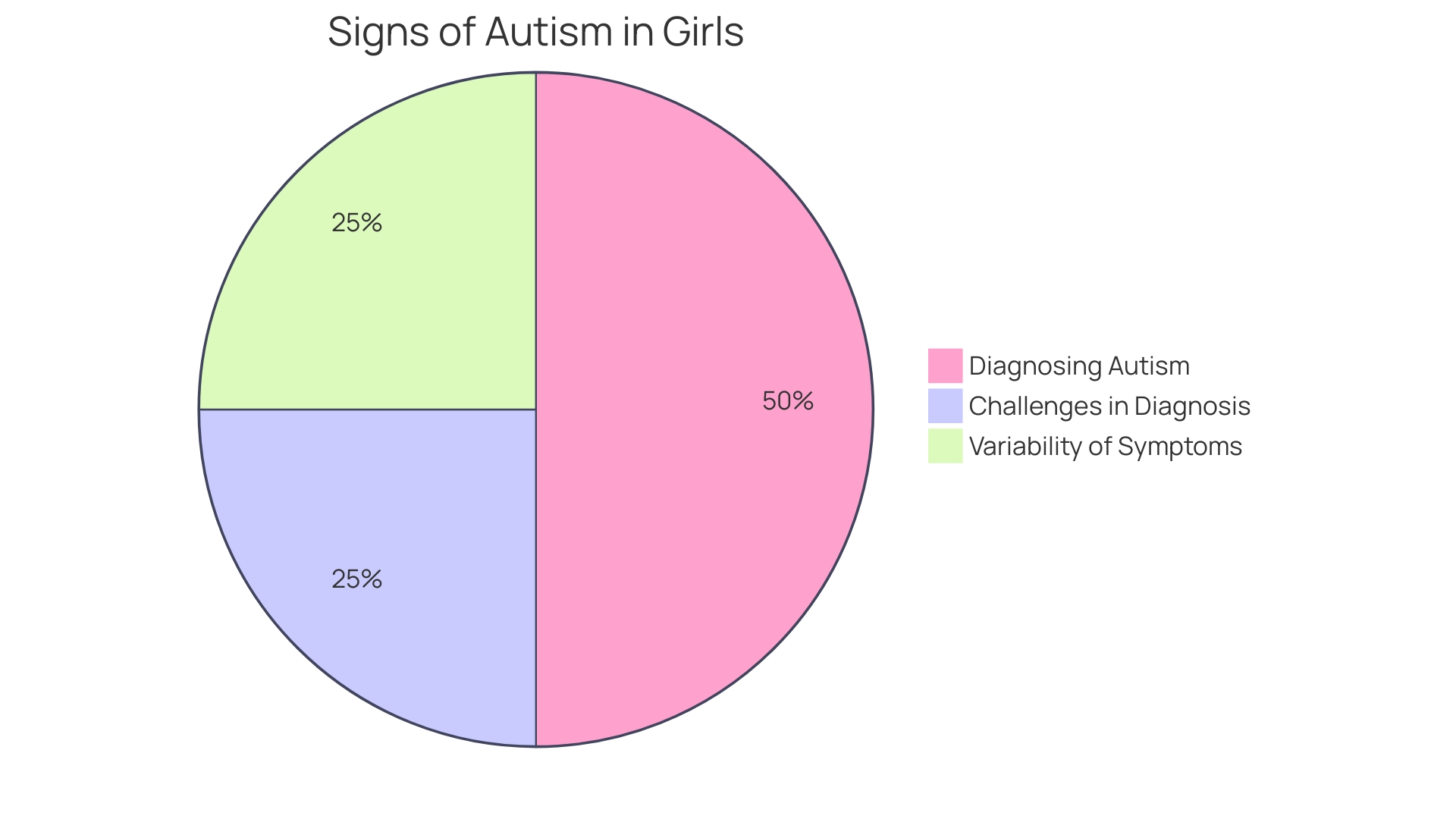
Conclusion
Recognizing autism in girls and women can be a complex task, often leading to underdiagnosis or misdiagnosis. The ability to mask autistic traits and conform to social norms can result in their autistic behaviors being overlooked or misunderstood. This article has explored the unique challenges faced by autistic girls, including the complexities of diagnosing ASD, the impact of gender bias, and the importance of tailored support.
The article has delved into the social and communication difficulties experienced by autistic girls, the mental health concerns they often face, and the educational challenges they navigate. It has highlighted the perspectives and experiences of parents raising autistic daughters and emphasized the need for tailored interventions and training.
Through real-life examples and outcomes, the article underscores the importance of understanding and supporting autistic girls to ensure their well-being and inclusion in every aspect of life. It is crucial to recognize the signs of autism in girls and provide them with the necessary support to thrive.
To empower Parent Advocates, it is essential to provide guidance and resources to help them navigate challenges and ensure the well-being of their children. By understanding the unique manifestations of autism in girls and promoting tailored interventions and training, we can create effective support systems that accommodate the needs and celebrate the contributions of autistic individuals and their families.
By fostering an inclusive and empowering environment, we can work towards a society that truly supports the well-being and inclusion of autistic girls. Together, we can make the race fair and ensure that all children, including those with autism, have the opportunity to participate fully in school, home, and leisure activities.




